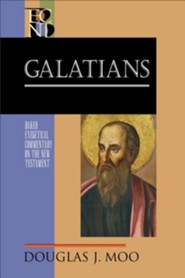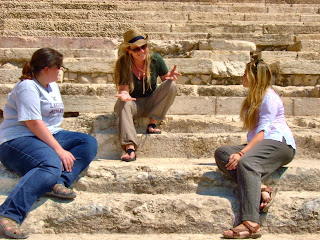Of the making of commentaries there is no end...
I am not one of those who bemoans this fact. I am convinced that new formats, contributors, can always contribute to this well-ploughed genre by making original contributions.

It seems that William Varner, Professor of Bible and Greek at the Master's College, has made an original and stimulating contribution of his own in the new
Evangelical Exegetical Commentary Series for Logos with his commentary on James. In fact, the endorsements for his work represent a veritable "who's who" in Jacobean scholarship and beyond. Check these impressive blurbs:
"Will
Varner has provided a highly valuable and well-needed contribution to the
exposition of the book of James in his new commentary on James for
the Evangelical Exegetical Commentary series. His reasoning is clear, cogent
and very welcome to the church's great heritage in this precious epistle."
F.
David Farnell
Professor
of New Testament
The
Master's Seminary
“Varner's commentary is so complete one can get by with
this commentary alone! It sketches the significance of the man James, sketches
the exegetical options, sorts out primary evidence, examines each text in light
of larger themes in biblical theology, draws even-handed and compelling
conclusions, and so puts on the plate all we need to read, interpret, and live
the message of James.”
Scot McKnight
Professor of New Testament
Northern Seminary
"In this installment of a first-ever
detailed exegetical commentary written first for digital publication, William
Varner sets a high standard with his comments on James under numerous
headings. After a thorough introduction highlighting the importance of
James, the half-brother of Jesus, as the leader of the early Christian church
in Jerusalem, the commentary expounds short sections of text with
introductions, translations, textual-critical notes, biblical theology,
devotional insights and potential sermon points often nicely alliterated, all
sandwiched around detailed clause-by-clause explanation of the
text. Particularly helpful are the grammatical categorizations, fully
conversant with verbal aspect theory and discourse analysis, and the voluminous
knowledge of and interaction with other scholars. Time and again Varner
helps the reader sift through complex exegetical conundra clearly, always
coming to plausible and usually to persuasive conclusions. A must for
any serious scholar, preacher or teacher of this often neglected epistle!"
Craig L. Blomberg
Distinguished Professor of New Testament
Denver Seminary
“Will Varner's James
is marked by all the characteristics that make for an excellent commentary on
Scripture: careful attention to the text, wide-ranging research, comparison
with other ancient texts, and concern for theological and practical
application.”
Douglas Moo
Wessner Chair of Biblical Studies
Wheaton College
Chair, Committee on Bible Translation
“While the homily we know as James has not been
neglected in recent NT scholarship, there is always room for another detailed
interaction with this document written to Jewish Christians, not least because
it may well be the earliest NT document we have. William Varner presents
us with an up-to-date, detailed, helpful analysis of James which interacts with
a wide range of scholarship, ancient and current, and gives us a new reason to
affirm once again that Luther, and James' other cultured detractors, were wrong
to neglect, parody, or pit James over against Paul.”
Dr. Ben Witherington, III
Amos Professor of NT for Doctoral Studies
Asbury Theological Seminary
Doctoral Faculty St. Mary's College, St. Andrews
University, Scotland
“I’m no Jacobean expert, but Varner has produced
a fine commentary, with a very readable introduction and sober comments
throughout. He seems very much on board with Hengel and Bauckham in attributing
a significant role to James in the early church. Each section has an
introduction, outline, original text, textual notes, ESV translation,
commentary, biblical theology comments, and a devotional/application section. A
fine commentary to add to your Logos collection!”
Dr. Michael Bird
Lecturer in Theology and New Testament
Crossway College
Brisbane, Australia
Recently, I was privileged to ask Dr. Varner a few questions on his James commentary.
1.
Talk about
what attracted you to the opportunity of writing a commentary on James for the
new Logos series the Evangelical
Exegetical Commentary (EEC) series?
I had finished my discourse commentary
on James and felt like I would like to delve even further into the text of
James. I liked the proposed format of the EEC commentaries, and when I heard
that they had not yet contracted for James, I threw my hat in the ring.
2.
What was your
process in writing this commentary?
I
had amassed a lot of articles from my first commentary so I started by reviewing
them. I then took a fresh look at the intricate details of the Greek text in
James and engaged in some more detailed lexical studies of individual words,
especially how they were used in extra Biblical Greek literature like Philo,
the Testaments of the Twelve Patriarchs, and the Greek ethicist,
Epictetus. I then explored some larger Biblical theological issues in each
passage. I then further developed some homiletical suggestions for preaching
each pericope.
It was the best preparation I could ever
do. The earlier commentary was based on the principles of discourse analysis
and focused on a top-down analysis that resulted in examining the macro-theme/s
of James. With that in hand, my work on this commentary focused on a bottom-up
analysis, and to my great delight the results confirmed the “big picture” that
I discovered earlier.
4.
Following up
from the previous question, what does a “new perspective” on James look like,
and what are the implications for the church?
I use that expression “new perspective,”
not out of a desire to copy the New Perspective on Paul, but to alert readers
to the importance of looking afresh at this book and its author. By a new
perspective on James the man, I mean to convey my argument that the
uterine brother of Jesus was not only the head of the Jerusalem believing
community, but that he was the human head of the entire Jesus movement from the
early 40’s to his death in 62 AD. I think that this recognition has
implications for seeing Paul in a more historically accurate role – the one who
called himself the “least of the apostles” and an apostle who acknowledged
James’s leadership role described above. A new perspective on the James the
letter revolves around my discovering what I believe is the “peak” of the
letter that opens up a fresh understanding of its overall theme and structure.
I do believe that I am suggesting a new way of looking at James and his letter
that will free the church from a wrong idea that Paul is the uncrowned Pope of the Protestant faith.




















